1. Add a 10-Minute Walk After Meals

Walking for just 10 minutes after you eat can help regulate blood sugar, improve digestion, and keep that post-lunch slump from turning into a full-body nap. Studies have shown it can be more effective than one long walk at the end of the day—especially for managing energy and metabolism. Plus, it feels way more doable than “run five miles before breakfast.” You can stroll around the block, pace your hallway, or chase your dog who refuses to come inside. It’s basically the grown-up version of recess, minus the kickball injuries. Small walk, big win. Source: NIH
2. Do 10 Squats Every Time You Brush Your Teeth
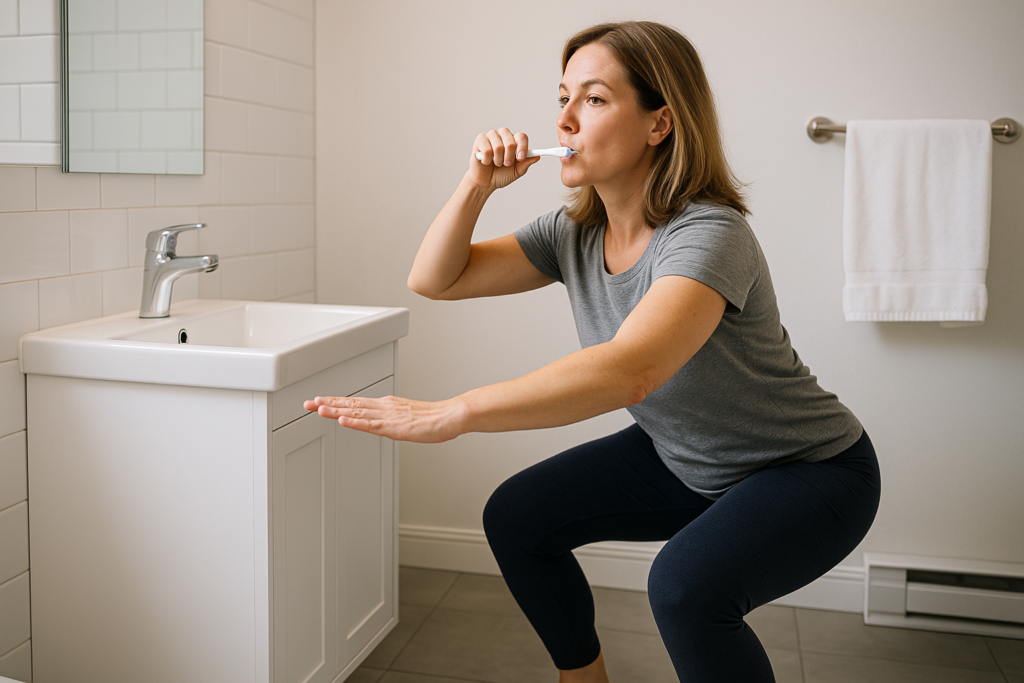
Multitasking is a lifestyle, and your bathroom is now your mini gym. Doing 10 squats while brushing your teeth (twice a day!) adds up to 140 squats a week—without scheduling a single workout. It wakes up your glutes, boosts blood flow, and helps counteract all the hours we spend sitting like floppy noodles. Plus, it makes brushing slightly less boring, which is a win for your mouth and your booty. Worried about balance? Don’t—just hold the sink like it’s your personal barre. Clean teeth, stronger thighs, and zero excuses. Source: Lifehacker.com
3. Keep a Water Bottle Within Arm’s Reach at All Times

We get it—hydration is the most obvious advice no one follows. But keeping a water bottle nearby actually makes you drink more (it’s science, not magic). Staying hydrated helps with energy, digestion, metabolism, and even keeps your joints happy when you’re moving. The trick is visibility: if it’s in sight, it’s in sips. Bonus: sipping water gives you a reason to take a break, stand up, or walk to the bathroom—fitness on autopilot. And yes, you can count walking to pee as part of your step goal.
4. Set a 30-Second Stretch Timer When You Check Your Phone
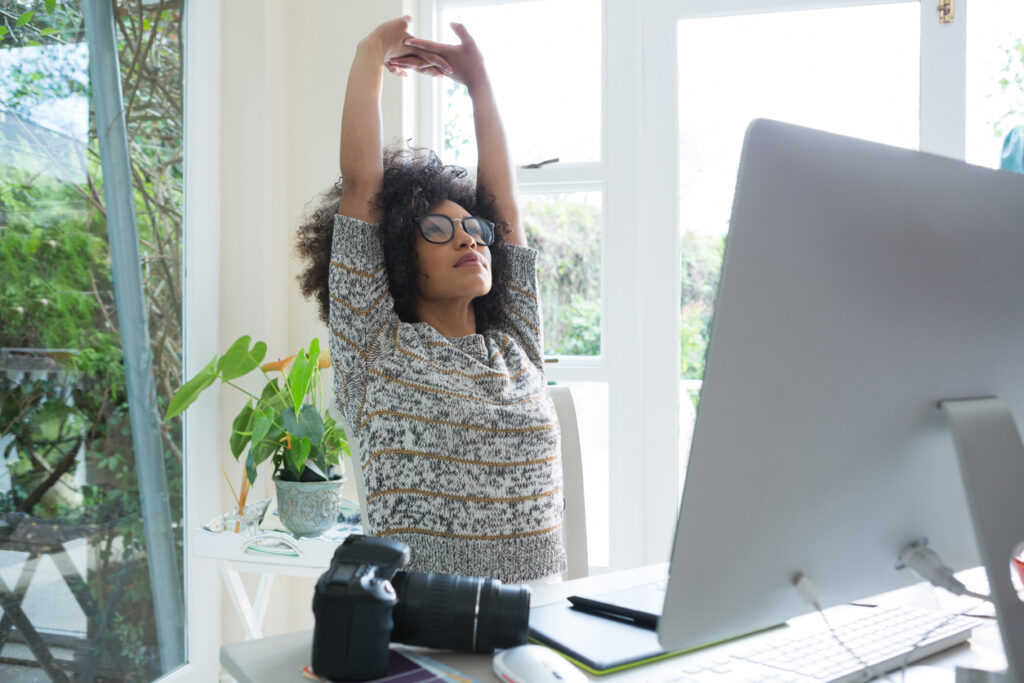
Every time you grab your phone for a scroll break, give your body a break too—30 seconds of shoulder rolls, hamstring stretches, or neck releases. It’s like giving your muscles a little “thank you” for surviving your life. These micro-stretches keep you limber, help with posture, and make you less likely to walk around like a T-Rex at 4 p.m. You already check your phone 4,000 times a day, so why not turn it into a wellness opportunity? Stretching also boosts circulation and calms your nervous system—aka a secret weapon against stress. Your spine will thank you later. Source: Harvard.edu
5. Do a 5-Minute Dance Break to One Song You Love
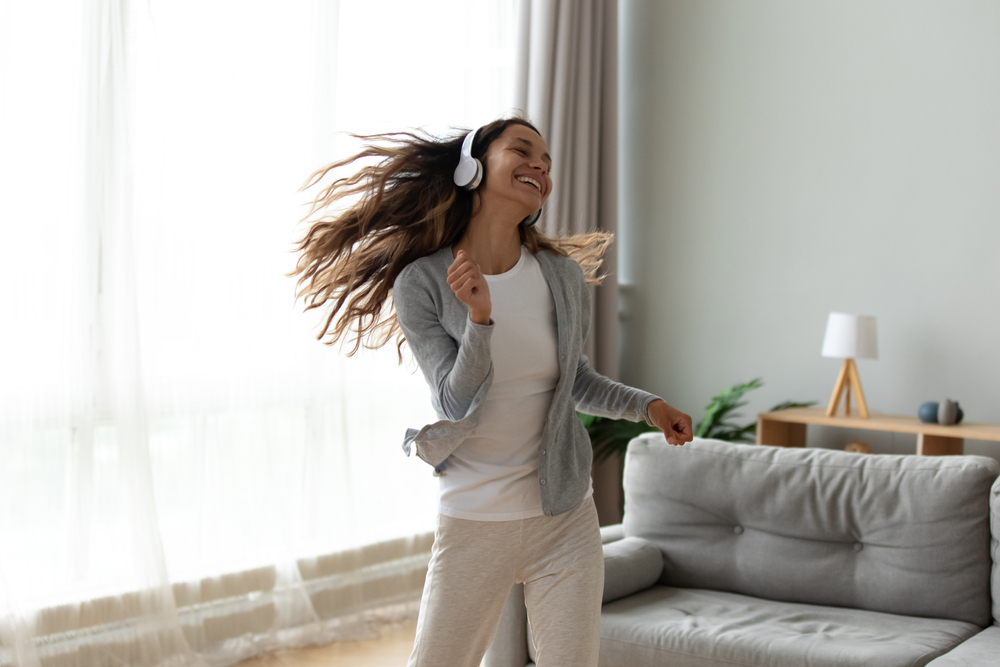
You don’t need choreography or TikTok fame—just hit play on your favorite song and move like no one’s watching (because hopefully they aren’t). Dancing gets your heart rate up, boosts endorphins, and gives your brain a joyful jolt that even burpees can’t compete with. Five minutes might not seem like much, but it’s enough to shake off stiffness, elevate your mood, and remind your body it’s not just a vehicle for stress. You’ll burn a few calories, sure—but more importantly, you’ll feel better. No gym, no rules, just vibes. And honestly? It beats planking.
6. Set a “Move Every Hour” Reminder

Sitting for hours on end isn’t just bad for your back—it slows circulation, tightens muscles, and has been linked to increased risk of heart disease. Setting a reminder to stand up and move for even just 1–2 minutes every hour can improve blood flow, reduce stiffness, and boost energy levels. You don’t need to do jumping jacks in the middle of a meeting (unless you want to)—just walk around, stretch, or do a quick lap around the room. Your body isn’t built to sit for eight hours straight, and even small bursts of movement help reverse that “I’ve become one with my chair” feeling. Studies show that breaking up sedentary time can support better glucose control and reduce fatigue. Think of it as a tiny rebellion against your office chair.
7. Swap One Daily Scroll for a Core Move
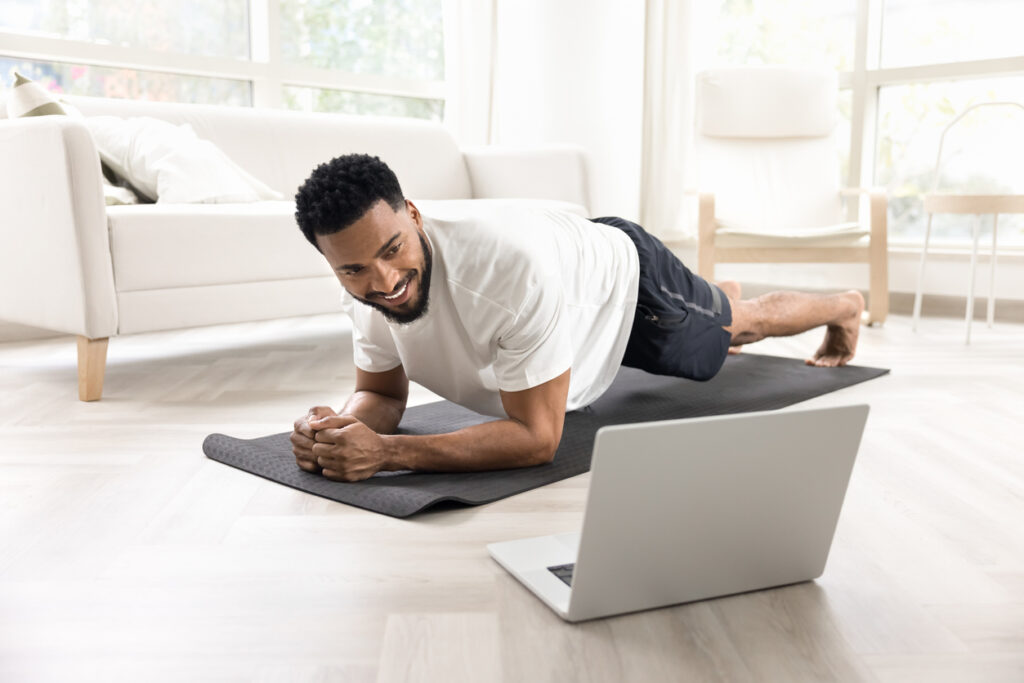
Scrolling aimlessly in bed? Do a one-minute plank or a set of bicycle crunches first. It sounds tiny, but if you replace just one daily scroll with one core-strengthening move, you’re making your muscles work instead of your thumb. Strong core muscles help with balance, posture, and protecting your spine, especially as we age or spend more time hunched over screens. It’s also way easier to commit to 60 seconds than a full workout class. The mental trick is pairing the habit with something you already do—like doomscrolling, but make it productive. Over time, that core strength adds up—and your phone will still be there afterward.
8. Take the Stairs (Even Just One Flight)
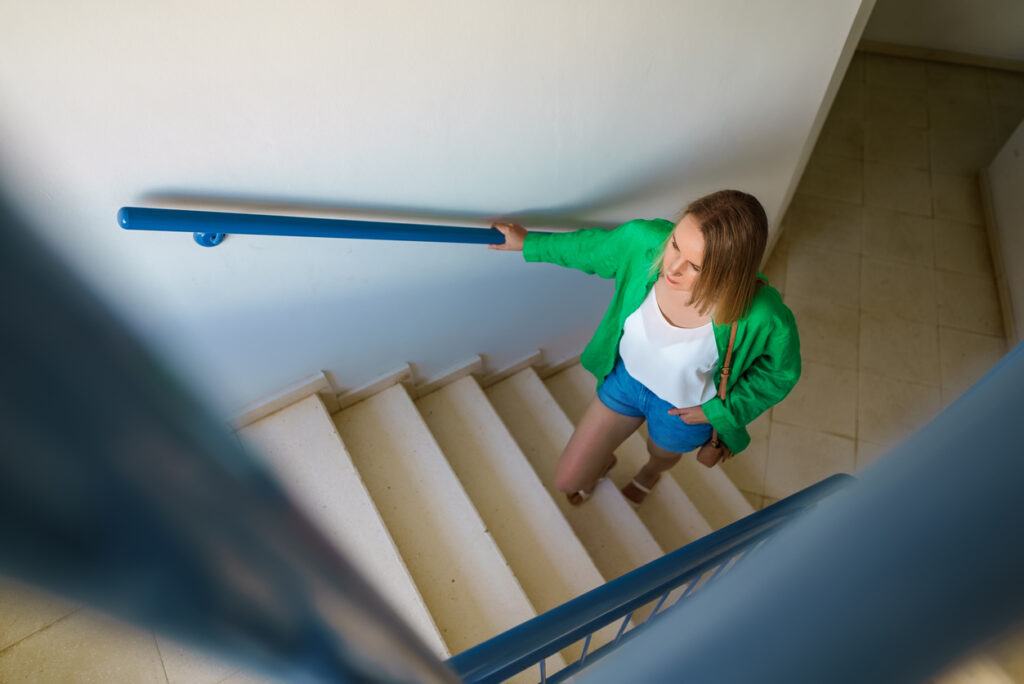
No, you don’t have to swear off elevators forever—but opting for the stairs even once or twice a day builds strength and cardiovascular endurance in less time than you’d think. Just one flight activates major muscle groups like your glutes, quads, and calves, and helps build balance and coordination. It’s a small challenge with a big payoff, especially when you make it a habit instead of a once-in-a-while decision. Plus, stair climbing burns more calories per minute than jogging and puts less strain on your joints than sprinting. If you work in a building or park in a garage, the opportunity’s already there. One extra flight today = stronger legs tomorrow.
9. Sneak in Calf Raises While You Wait

Stuck brushing your teeth, waiting for the microwave, or standing in line? That’s prime calf-raising time. Simply lifting your heels off the ground and lowering them slowly engages your calves, improves balance, and even strengthens your ankle stability—all in the time it takes your coffee to reheat. You can do them barefoot or in sneakers, and they’re surprisingly effective for such a simple movement. Stronger calves = better support when walking, climbing stairs, or busting out your dance moves. It’s an easy, discreet way to sneak strength into everyday life. And honestly, you’ll feel kinda smug doing a workout move at the stove.
10. End Your Day with Legs Up the Wall
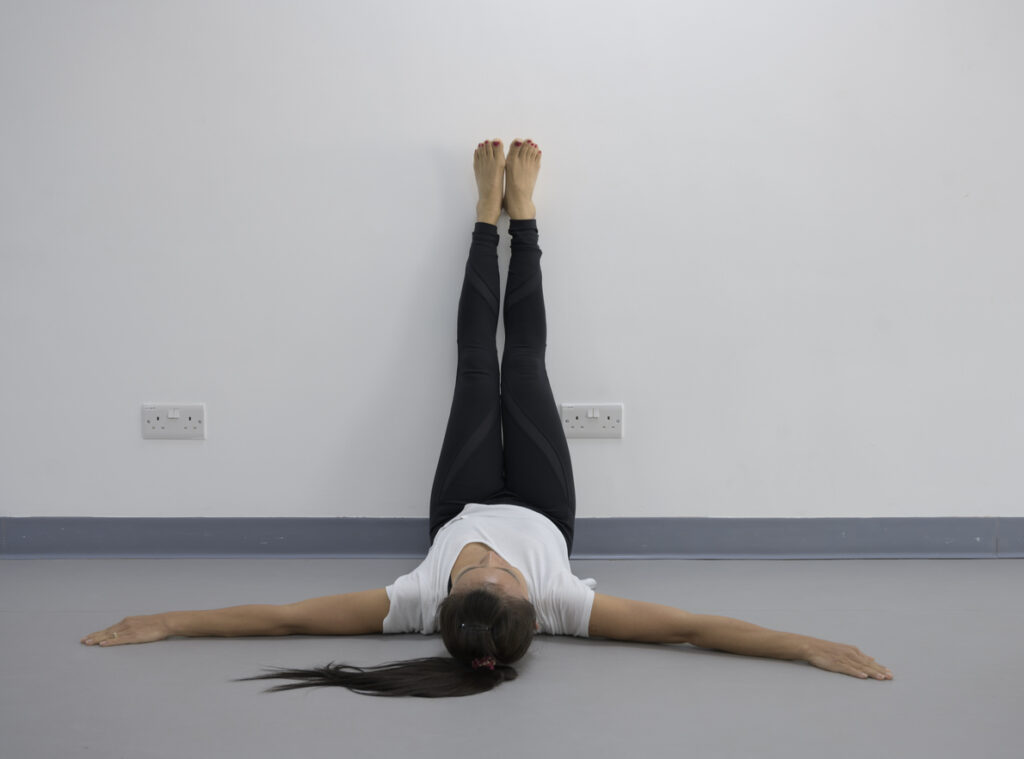
This relaxing yoga pose (literally lying on your back with your legs resting vertically against a wall) improves circulation, reduces swelling, and helps your nervous system chill the heck out. After a long day of sitting, standing, or running around, it’s the reset your body craves. Studies show it can lower heart rate, decrease cortisol (your stress hormone), and help improve sleep—especially if you breathe slowly while doing it. You don’t need to be flexible or spiritual to benefit—it just feels good. Do it for five to ten minutes before bed, and you might fall asleep faster and wake up feeling less stiff. Think of it as the stylish cool-down your day deserves.


